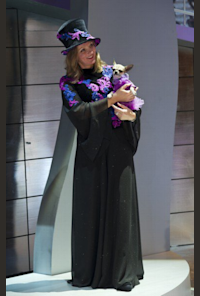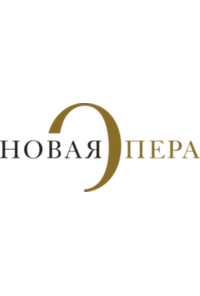Capriccio (1941) is the last opera by Richard Strauss to a libretto by conductor Clemens Krauss, written with the participation of the composer according to the script plan of Stefan Zweig. This is an opera about opera, full of humor and witty musical jokes, the work of a master who has come a long way and reached his understanding of the art of opera (Strauss was 77 when he finished Capriccio). The love triangle becomes the reason for an original theatrical discussion about the role of word and sound in musical theater, about the purpose of the poet and composer in it. The main question that is contained in the Capriccio is the following: is the poetic word a source of inspiration for the composer or, conversely, is the musical imagination of the composer predetermining the words and actions with which it should associate itself? The discussion "What is more important in opera - words or music" was conducted for several centuries and worried Strauss himself. Developing the idea of "Capriccio", the composer wrote to the librettist: "It is necessary to create a witty dramatic paraphrase on the theme: first the word, then the music (Wagner), or first the music, then the word (Verdi), or only the words without music (Goethe), or only music without words (Mozart)."
Despite the fact that Capriccio touches on serious aesthetic issues, this opera is interesting and fascinating. The performance includes various types of musical and theatrical action: drama reading, a comic duet of Italian singers, a magnificent playing of a string sextet and even a ballet! The reason for the pleasure will be the spectacular sound of the Strauss orchestra, and the elegant atmosphere of the Countess's house. Capriccio has a lot of comic characters and funny situations. What, for example, is a drunken Italian soprano singer or an Italian tenor obsessed with the idea of getting his advance!
Strauss called his Capriccio "a lollipop for connoisseurs." A meticulous lover of opera art will be able to recognize in the creation of Strauss quotes and hints at the music of Rameau, Couperin, Gluck, Verdi, Wagner and, of course, Strauss himself, who created this fascinating musical cocktail. "Capriccio" is a mood, a whim, a quirk, a sudden idea, a witty statement of a great artist, summarizing once again the experience of a long life" (E. Krause).
The premiere of Capriccio at the Novaya Opera on October 4, 2012 is the first performance of this work in Russia.
Alla Chepinoga, director of the play:
"Capriccio" is a work unique in its nature, according to the author's definition, it is a "conversational play with music". Our performance is also unique: a combination of intellectual music and glamorous design, simple history and sophisticated interpretation... We tried to reveal the eternal theme – which was the first: the chicken or the egg, drama or music – in several theatrical languages at once. Metaphorical scenery, video installations, mask characters, elements of the theater of the absurd and many surprises await the viewer who came to the performance.
The theater, like the mirror, is a reflection of life, so we have a huge number of mirrors in the scenery, and what happens in the looking glass – in the depths of a woman's loving heart filled with art? The answer to this question will have to be solved in the finale of the play.
Victor Gerasimenko, artist:
The smooth lines of the scenery for "Capriccio" are inspired by the music of the opera, which is distinguished by a certain smoothness and non-sharpness of the theme itself. There are no sharp conflicts, smooth conversation, conversation. Hence the plasticity of the interior, in the center of which is a staircase, the incompleteness of the lines, similar to how it is used in Modern. But there is no modernity either in the railings or in the decoration. I do not resort to stylization, but use a mixed style. Most likely, the decoration resembles a modern pavilion with a large number of mirrors. Why mirrors? Because in this opera there is "not real", the illusory nature of everything: a reflection of feelings, a reflection of love, a reflection of characters.
In scenography, a screen is used. This is like part of a modern interior: a certain pool with swimming fish is what rich people allow themselves today. And there's going to be something going on in that pool. What is still a mystery. It is a projection that will interact with reality.
Strauss's opera is designed for a refined audience, but I believe that such performances should be in the theater. It is works such as "Capriccio" that educate taste.




